
[ad_1]
“Times are changing and we have to change with them,” says UK-based photographer Rosie Hardy about the changing pace and formats of how photography grow online. She’s enjoyed considerable success with her photography, having gone viral multiple times via her work on Flickr. That has translated into commercial projects with high-profile brand names and celebrities in the years that followed. The fame hasn’t changed her as a person though; she’s still grounded in reality. But her surreal images transport the viewer to an otherworldly setting, which is often a candid representation of her emotions.
View this article with minimal banner ads in our app for iOS, iPad, and Android. Get no banner ads for $24.99/year.
Internet-created fame can be a double-edged sword. It’s catapulted many unknown people into being overnight sensations. Not everyone can handle that kind of fame, and the dopamine rush that comes with being an instant star doesn’t last too long for everyone. The online world moves at an unbelievable pace these days; yesterday’s phenomenon is tomorrow’s stale news. After that first rush of fame, remaining relevant to an online world in an age where we’re overloaded with information is tricky. Rosie Hardy and her photographs caught the eye of the Flickr community and the broader internet over a decade ago. She used that to engage more prospective clients steadily and is a thriving commercial photographer today. We caught up with her to understand how her career has progressed since those initial years of online fame, and to know more about her amazing series of self-portraits.
The Essential Photo Gear Used by Rosie Hardy
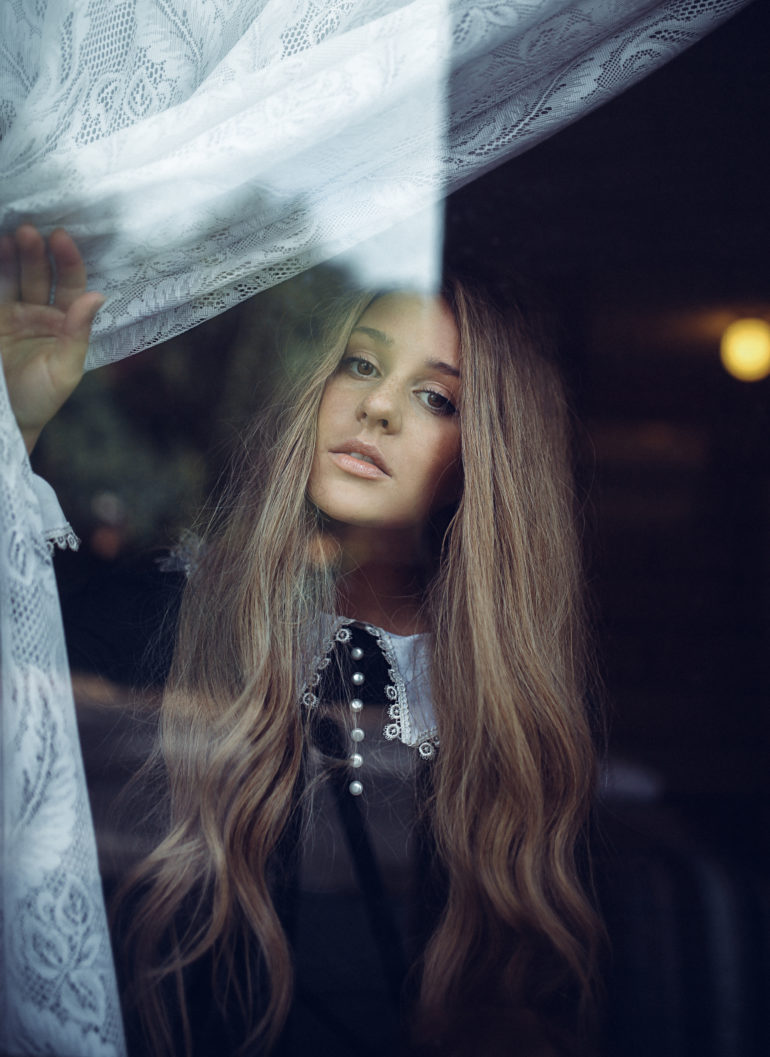
Rosie told us:
I’m a great believer in the content and message of your work being more important than kit and gadgets, however I can’t understate how having reliable and quality kit has made my workflow enjoyable and helped bring my visions come to life.
The Phoblographer: Tell us a bit about yourself and how you got into photography.
Rosie Hardy: My name is Rosie Hardy, and I’m 31 years old. I’ve been shooting self-portraits since I was sixteen – my photography hobby collided with the birth of the internet, so uploading my work online has had a huge influence on my career. My interest in photography and editing began with having bad skin as a teenager. My brother (a big fan of the computer) showed me how to edit my acne out using a program called GIMP on his Linux. I was amazed – in a few clicks, I’d suddenly become someone who was far less likely to be picked on at school. I downloaded it straight away and soon realised I needed some more photographs to practice on.
Of course, being teased at school isn’t just limited to acne – soon, I was teased for being the kid who airbrushed my photos to the nth degree. So I decided the only way to counter this was to become pretty good at it, and possibly there would be less to pick on. So I hid out in the art room every lunchtime, studying portrait photography and learning how to properly retouch and edit. Within two years, I had learned to composite seamlessly, and within three, I had photographed the album cover for Maroon 5’s “Hands All Over” album, which was a self-portrait taken on my parents’ bed at home.
Unfortunately, everyone from school decided that “Maroon 5 weren’t that good anyway”, so I never quite won over my teenage critics.
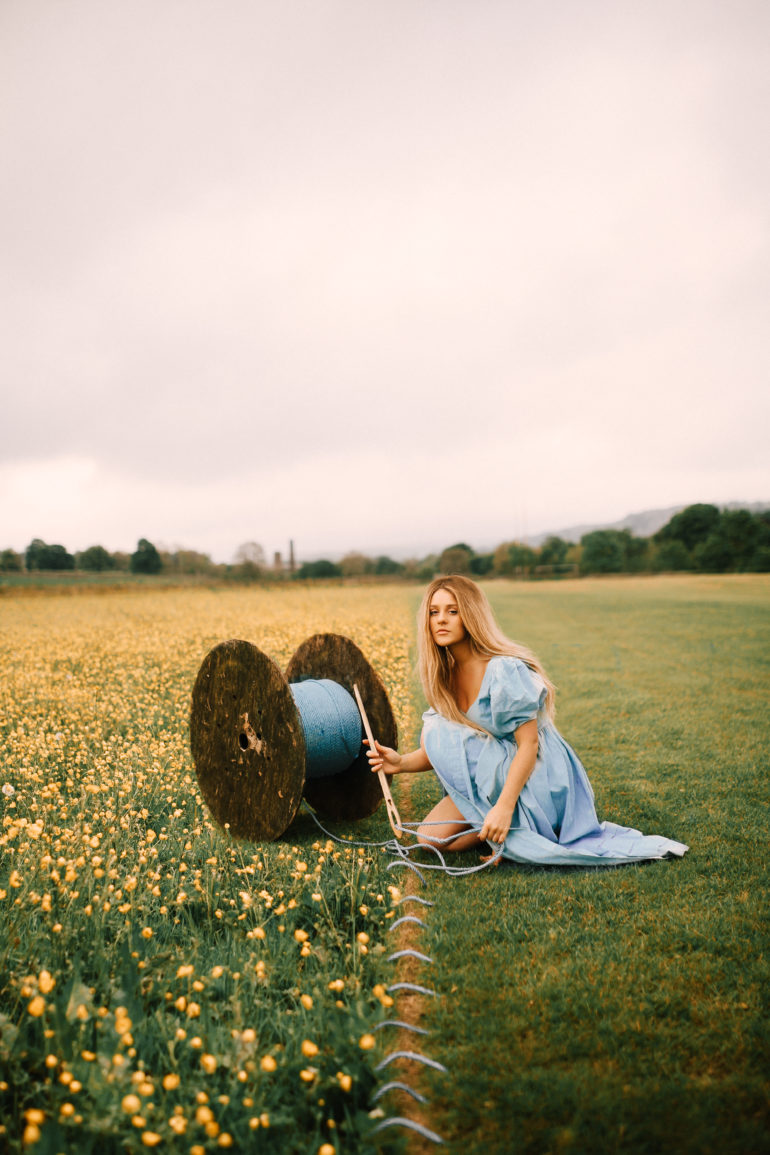
The Phoblographer: You’ve come a long way since the album cover you shot for Maroon 5. Tell us about how your professional career has progressed since then.
Rosie Hardy: The last few years have been a wild ride both professionally and personally. In 2016, my boyfriend passed away from cancer. This loss changed my life dramatically and set me on a trajectory to use my art to create cathartically again – just like I did as a wide-eyed, curious teenage photographer. I wanted to reconnect to the creation of art as therapy – not as a means to climb the portfolio ladder, gain recognition, or even earn money. Of course, these things also happened, but as a sort of bonus to the work being made from a dark yet very meaningful place.
I undertook a 365 Project to monitor and examine my own grieving process. I uploaded these images (many of which lacked quality and effort due to the exhaustion and disillusionment that came along with being forced to put some sort of life back together), but I consistently shared my journey, honestly and openly. This created a huge rush of engagement in my social media – I had support flooding in from so many people, many of whom became invested in my wellbeing as much as my art.
After two years post 365 project, this growth in social media led me to work with brands like Logitech, Microsoft, and Universal Studios as a content creator. I’ve also worked privately with companies who have discovered my work via social media and hired me for private campaigns. I’ve been lucky enough to shoot Disney collections, an environmental campaign for a large electronics firm, and work alongside Dove internally on a new beauty product.
The large collection of imagery I created during my 365 has also enabled me to work with publishers, utilising this diverse portfolio for book covers and the occasional billboard. I feel like the sweetness of this lies in that it wasn’t my intention for the momentum around my work to gather as it has – in a way, it almost feels like a special someone is having a hand in making my grief have a silver lining in some way. I’d be equally as satisfied with the project if it hadn’t led to any of this – but any freelancer will agree that income and work as a consequence of your art is a huge plus!
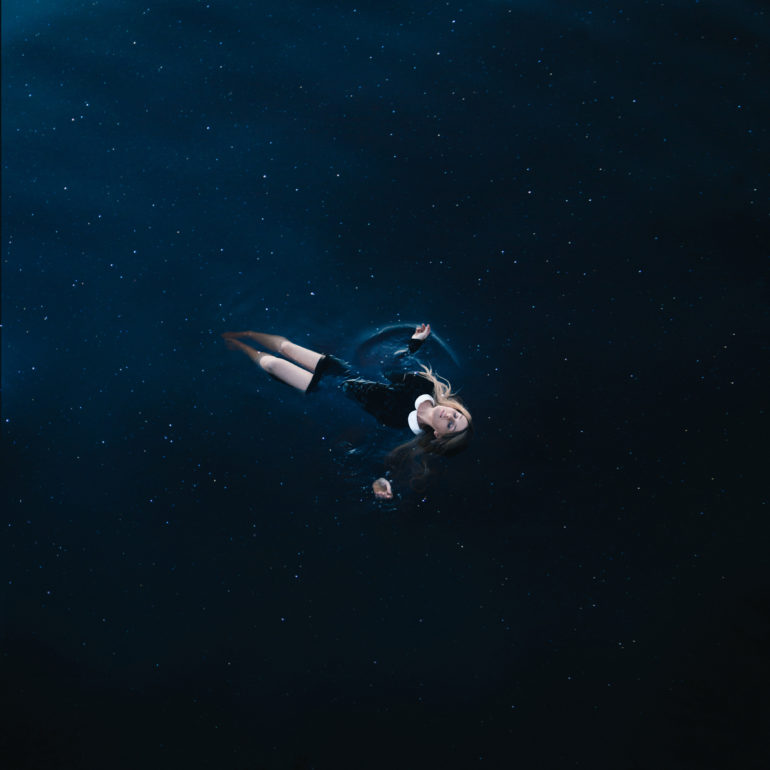
The Phoblographer: You’ve been a creative artist for over a decade now. In what ways has your thinking process changed since you started out professionally?
Rosie Hardy: I would say I’m more organised in my thinking process now – and less inhibited by costs and general obstacles. With practice and trial & error comes this great relief that there is a way through most issues, and many of them can be navigated before the shoot even begins! I use prop warehouses and hire from theatre costume stores now to save spending thousands of pounds (and hours) on eBay. I plan around the weather (what a luxury!) but also know I can still have processes on standby in case of rain or wind. I still have personal shoots which don’t work, ideas that don’t translate, but they’re becoming less and less, which is lovely!
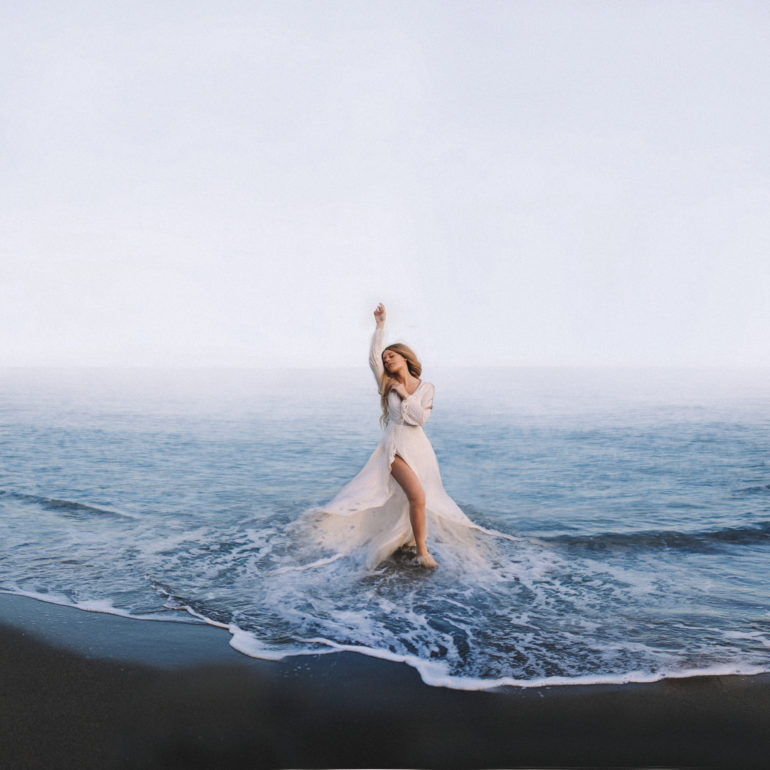
The Phoblographer: Surrealism is a mainstay in your portfolio. With so many years of surreal photography under your belt, how do you challenge yourself to come up with visually unique work for each new project?
Rosie Hardy: Great question and one which I’m still wrestling with. I like to try and be inspired by two main things – an emotional life and a fairytale escape. When I’m inspired by my inner emotional dialect, I create work based on feelings, idioms, and themes, e.g., “hitting the wall.” Making those recognisable and familiar feelings into visual representations is a really great thing for me.
When I’m feeling inspired by escapism and fairytales, I try and find a location or costume to be inspired by and build the shoot around that. I don’t think there’s any shame in re-attempting old images and ideas since so many feelings and experiences repeat over our lives.
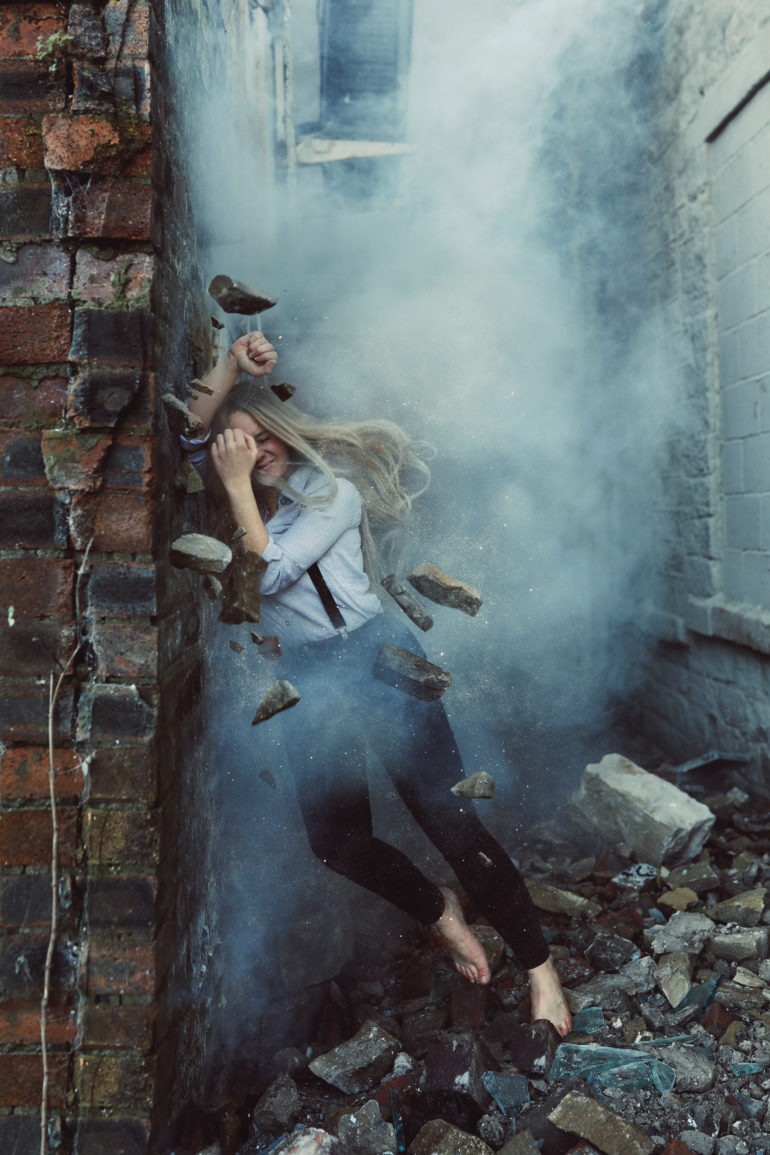
The Phoblographer: Is there a lot of yourself and your personal experiences that translate into these visuals?
Rosie Hardy: Absolutely, I’d say it verges on 100%! I don’t think I’d enjoy any career or job which wasn’t authentic to me, and I’m very, very lucky to have found one which is creatively rewarding and pays me enough to cover my life expenses and give me a little extra on the side. I think it’s part of what makes my work connectable too – whatever I’ve felt before, hundreds of other people looking at my work have felt and are feeling that way too.
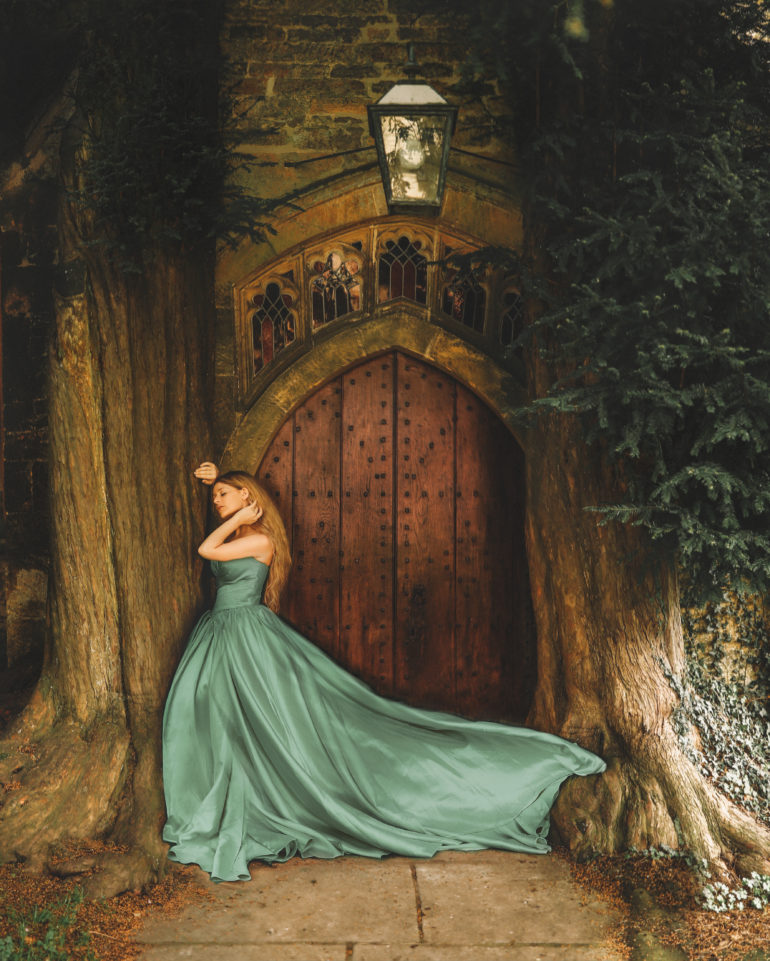
The Phoblographer: How was your experience with photography and creativity affected during the Covid-19 lockdown?
Rosie Hardy: During the lockdown, I tried to create an image each week indoors, to reflect the current times. It was a huge challenge for me, as I find shooting indoors, the least inspiring thing ever. Also, the theme each week ended up being frustration and feeling trapped, which became repetitive and even more frustrating! The scariest thing for me was seeing all my work disappear or postpone to the next year – I had to scramble to think of ways to earn, and recording editing tutorials to each image I was creating gave me some financial relief. I’d say the overall hardest thing though, was finally having a spring that was full of free time, but legally not being allowed to go outside and actually utilise any of that time!
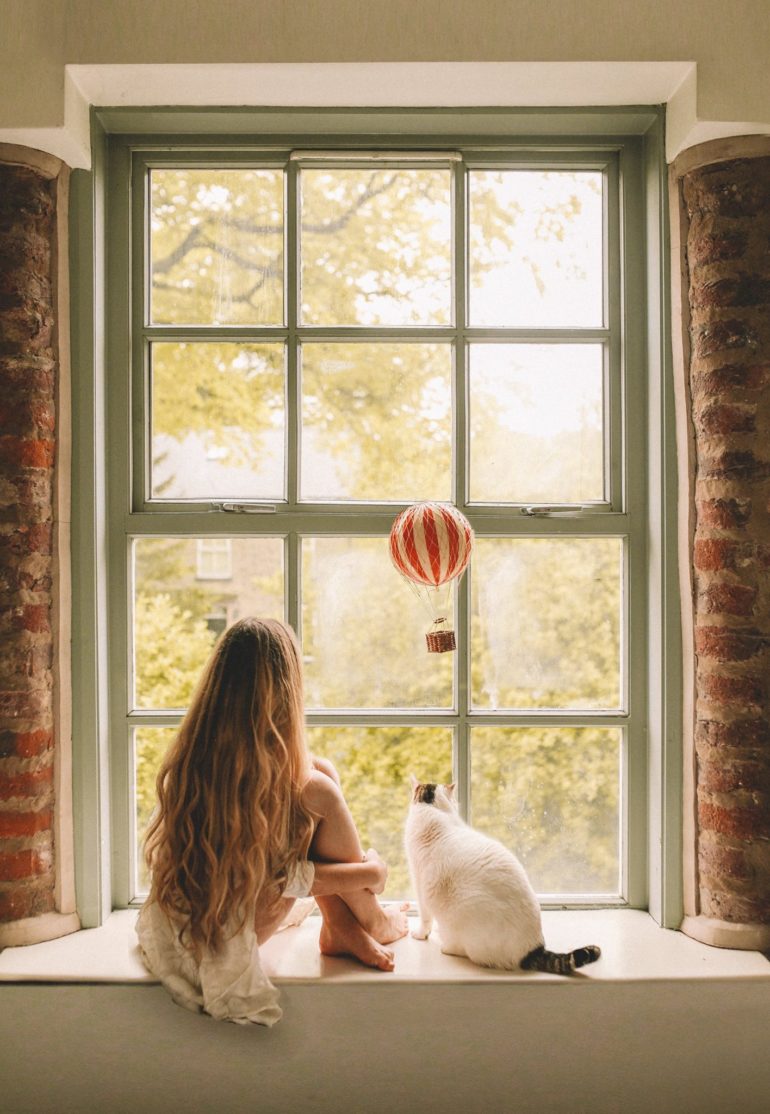
The Phoblographer: What are some of your personal favorites from this series? How challenging were they to produce?
Rosie Hardy: My favourite image from my lockdown series was my “Bubble” image. Just as everything was closing down, I frantically panic-bought a Zorb ball from eBay – and blew it up in my bedroom using my Hoover. It felt so comedic and bizarre to be sat on my bed in a giant real-life bubble, and equally as strange that this craving for protection from a virus was dominating everyone’s lives.
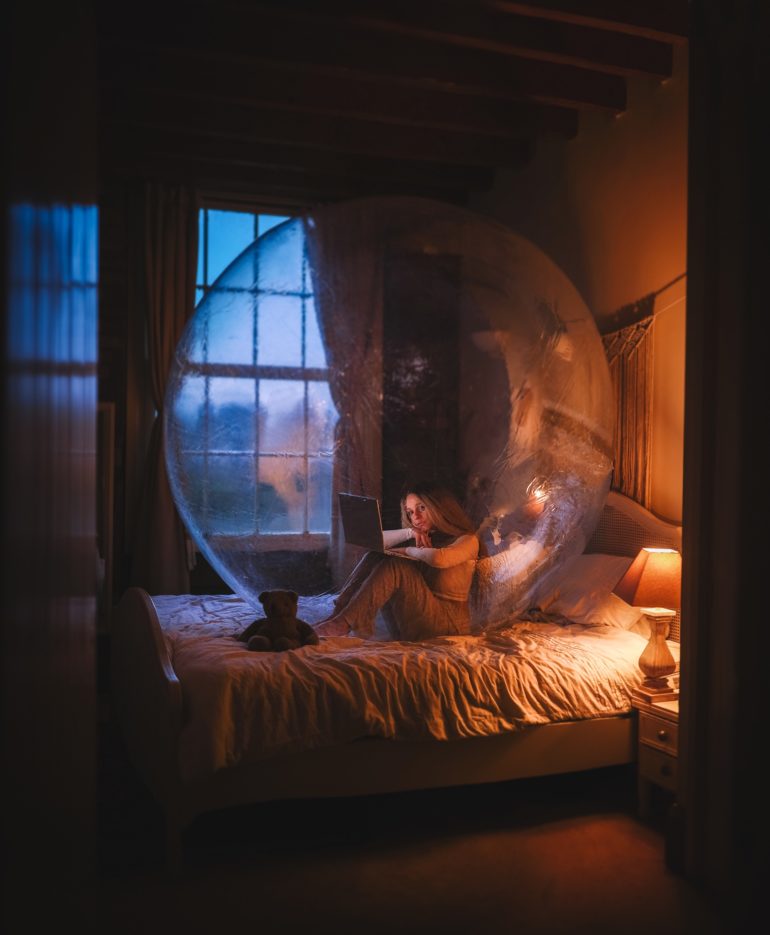
My favourite image from my 365 days of Grief Series was my second to last image. I didn’t want the final image I created to be one about my boyfriend who had passed because he explicitly told me he wanted life to continue for me and his death not to be the main focus of my life forever. So instead, I used my second to last image, to sum up the year in relation to his presence in my life. It’s not the most amazing picture or concept, but it’s the most meaningful. I asked my neighbour to wear his hoodie and hug me. I got to close my eyes and smell his smell and pretend it was his arms wrapped around me again. I edited this image of us hugging into the very first image I created for the series, and it felt like a fitting way to join the circle of the process.
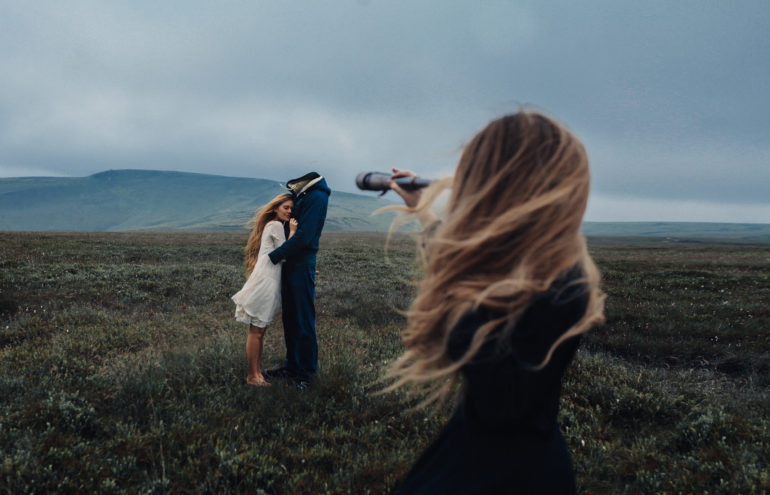
The Phoblographer: As a visual storyteller, have you found your work being copied or aped since you became popular online? Do you find that flattering or is it something that’s become a bother?
Rosie Hardy: Oh, absolutely, and it’s both flattering and frustrating. I understand being excited by art, and I would never want to quash someone’s feeling of being giddy to create, giddy to try a new idea, and giddy to learn something. However, when it’s incredibly personal imagery being recreated in perfect detail and used by someone to just simply “make a new cool picture” for some likes on Instagram, that’s where it doesn’t feel right. If people credit me for the original concept, I don’t mind, but when it crosses into claiming that idea as their own and selling that work for their own profit, it definitely stings. Most people respond very kindly and are completely understanding if I email them with an issue – they’ll either add credit to me or delete the image. I’ve had one bad experience where the person responded very negatively and defensively, so I just had to move on and let it go.
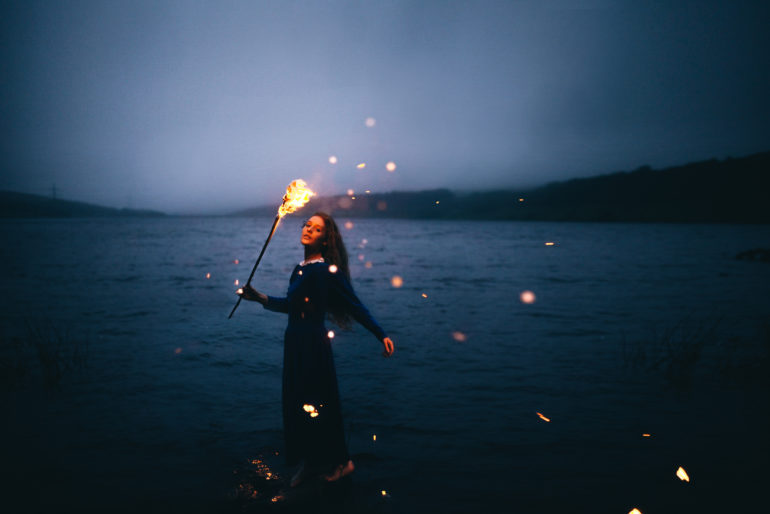
The Phoblographer: How has the experience been shooting such creative portraits with celebrity clients? Do you have some memorable anecdotes from any of these shoots?
Rosie Hardy: For the most part, I always thought shooting celebrities was the epitome of success as a photographer. As a process, it’s far more stressful with more pressure and approvals to go through than a regular shoot – so I actually enjoy that process less than just being allowed to run wild.
Everyone I’ve worked with has been lovely, though – Geri Helliwell stands out as someone who was particularly kind. I told her about my alopecia (I had hair loss at the time), and she bought me a special brush for hair growth on our next shoot. Donny Osmond told me about how he fell in love with his wife the first time he met her while we were on a lunch break, which was pretty sweet. Overall, you kind of just realise everyone is just like you – they have favourite sides of their faces, hate their noses, have stories about falling in love and being hurt, and just want to have a good day together!
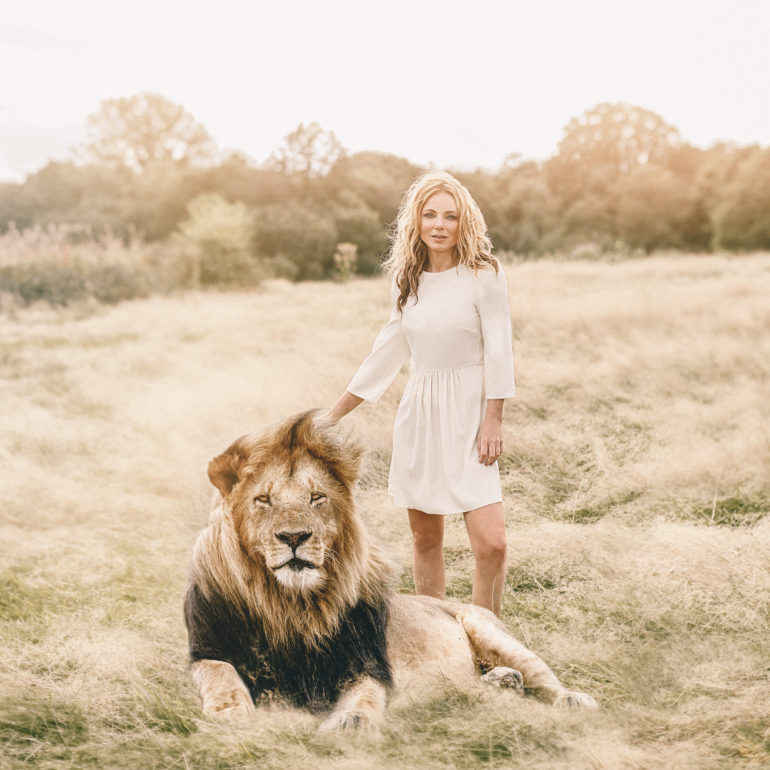
The Phoblographer: How different are photography-centric social media platforms from back when your photos went viral on the internet to now. Are the newer algorithms making it harder to get proper reach?
Rosie Hardy: I think most photographers and artists will agree that platforms like Instagram have had a detrimental impact on so many aspects of our work and careers. The lack of full-size imagery means it’s harder to appreciate detail and technical achievements like focus – seeing a picture the size of the palm of your hand just doesn’t have the same impact as a full-size print. The algorithm rewarding quantity of uploads over the quality, and even the engagement is disappointing.
A talented artist and I had this discussion recently, and she verbalised well how art has become “fast food content” and those who can create daily without quality are given exposure more than those who spend months working on a piece. This erases so much talent from our view – even if we choose to follow that talent! It’s also disappointing to see that “success” is now being measured by likes, comments, and followers – rather than ability, hard work, and growth.
That said, times are changing, and we have to change with them – I don’t think all artists need to become tik tokers, dancers, and content producers in order to get a good reach online, but it’s definitely another modern-day challenge to contend with. I’m going to be working on figuring that out this year and will be reporting my findings as I go!
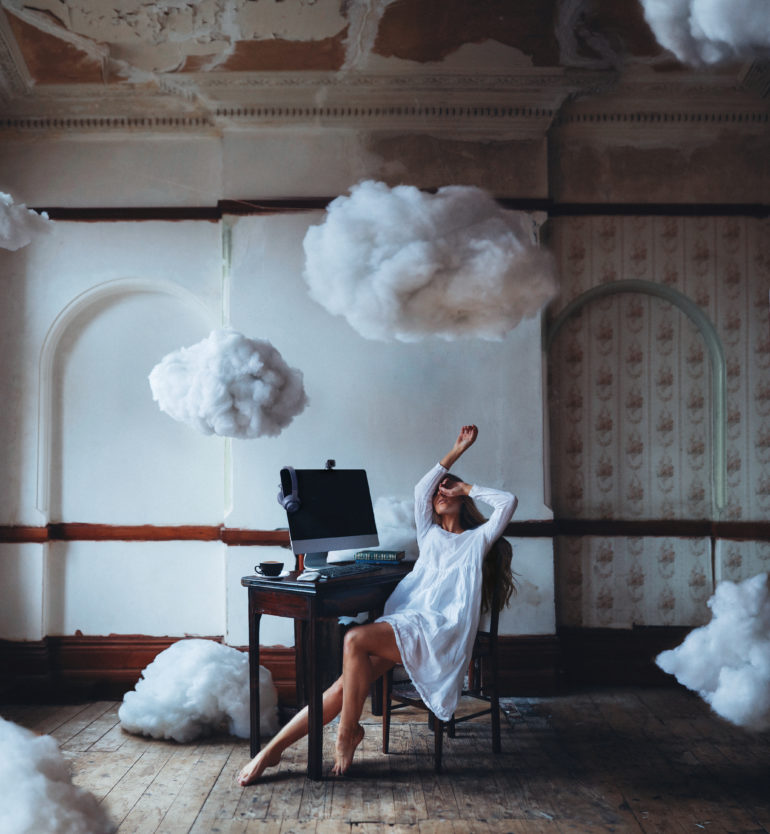
The Phoblographer: I often find myself at a standstill to come up with a creative concept. What advice would you give readers to get themselves out of similar creative ruts?
Rosie Hardy: For me, the cure to a creative rut has always been the following recipe –
1. Go out and live your life a little. Immerse yourself in the struggles as well as the beautiful moments, invest in your life’s storyline. Often inspiration comes when you have a refreshed experience of a feeling.
2. Once you’ve pinpointed a feeling, research how other people have portrayed it. Look at illustrations, sculptures, listen to music and see what themes and ideas people use to really zone in on this feeling. Note down the things that resonate with you, and start building some ideas that get you inspired.
3. Plan a loose shoot for the idea you’re most drawn to – allow it to fail. Go back and revisit it, change the location or a prop, and eventually you’ll come to something which works and feels like a little piece of you looking back from the screen. That’s my process!
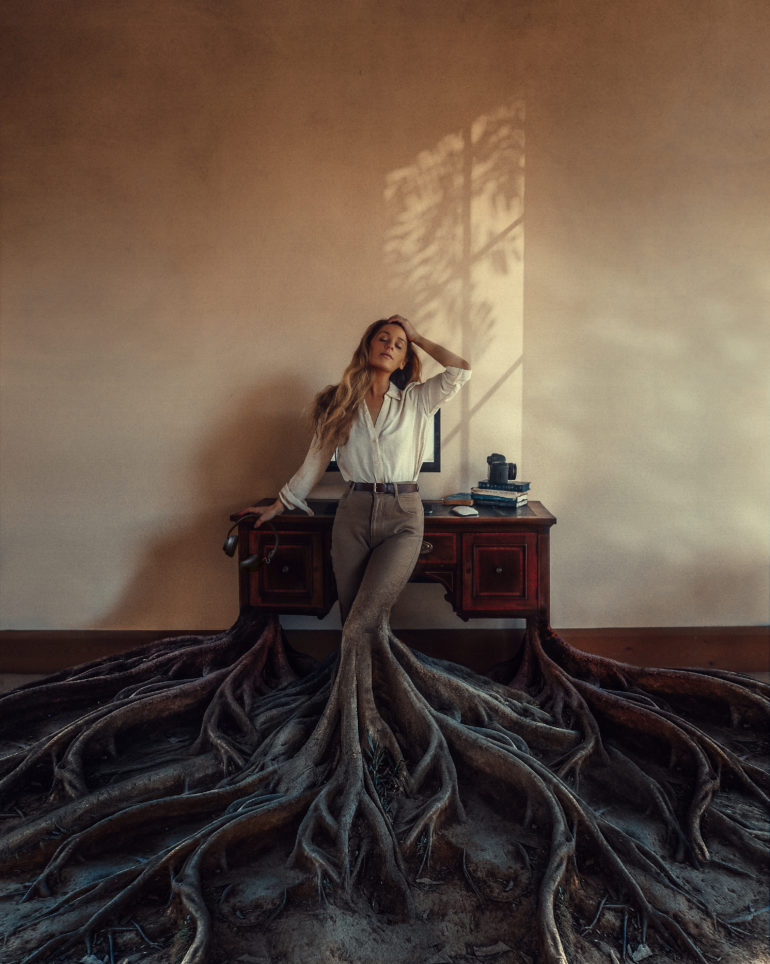
All images by Rosie Hardy. Used with permission. Please visit her website, Instagram, Facebook, Flickr, and Pinterest pages to see more of her photos.
Want to get your work featured? Here’s how to do it!
[ad_2]






